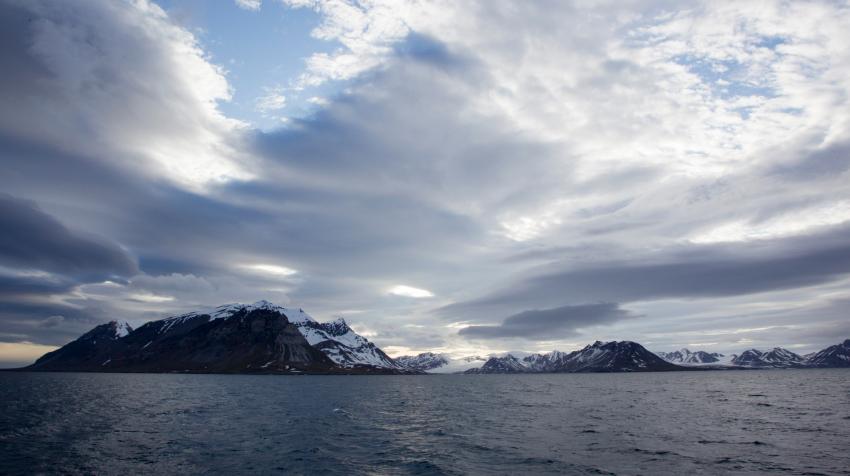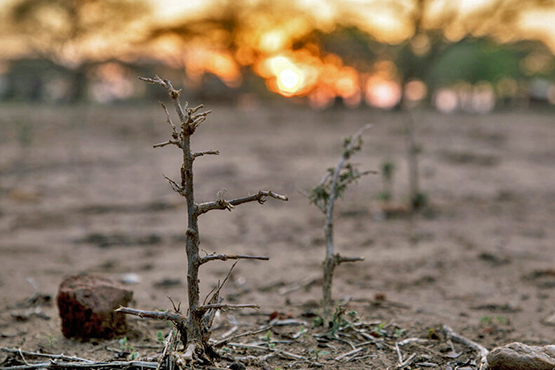Climate Change is the defining issue of our time and we are at a defining moment. From shifting weather patterns that threaten food production, to rising sea levels that increase the risk of catastrophic flooding, the impacts of climate change are global in scope and unprecedented in scale. Without drastic action today, adapting to these impacts in the future will be more difficult and costly.
The Human Fingerprint on Greenhouse Gases
Greenhouse gases occur naturally and are essential to the survival of humans and millions of other living things, by keeping some of the sun’s warmth from reflecting back into space and making Earth livable. But after more than a century and a half of industrialization, deforestation, and large scale agriculture, quantities of greenhouse gases in the atmosphere have risen to record levels not seen in three million years. As populations, economies and standards of living grow, so does the cumulative level of greenhouse gas (GHGs) emissions.
There are some basic well-established scientific links:
- The concentration of GHGs in the earth’s atmosphere is directly linked to the average global temperature on Earth;
- The concentration has been rising steadily, and mean global temperatures along with it, since the time of the Industrial Revolution;
- The most abundant GHG, accounting for about two-thirds of GHGs, carbon dioxide (CO2), is largely the product of burning fossil fuels.
The UN Intergovernmental Panel on Climate Change (IPCC)
The Intergovernmental Panel on Climate Change (IPCC) was set up by the World Meteorological Organization (WMO) and United Nations Environment to provide an objective source of scientific information.
Climate Change 2021: the Physical Science Basis
The latest scientific report by the IPCC finds changes in the Earth’s climate in every region and across the whole climate system. Many changes are unprecedented in thousands, if not hundreds of thousands of years. Some, such as continued sea-level rise, are irreversible over hundreds to thousands of years.
The report clearly states that the role of human influence on the climate system is undisputed. It also shows that human actions still have the potential to determine the future course of climate, pointing to strong and sustained reductions in emissions of carbon dioxide and other greenhouse gases to limit climate change. Benefits for air quality would come quickly, while global temperatures would take 20-30 years to stabilize. The report, issued by the IPCC’s Working Group I and approved by 195 member governments, is the first in a series leading up to the 2022 IPCC Sixth Assessment Report. It includes a closer look at the regional dimensions of climate change and builds on advances in attributing specific weather and climate events to climate change. For more information, read the fast facts on the physical science.
Fifth Assessment Report
The report provides a comprehensive assessment of sea level rise, and its causes, over the past few decades. It also estimates cumulative CO2 emissions since pre-industrial times and provides a CO2 budget for future emissions to limit warming to less than 2°C. About half of this maximum amount was already emitted by 2011. The report found that:
- From 1880 to 2012, the average global temperature increased by 0.85°C.
- Oceans have warmed, the amounts of snow and ice have diminished and the sea level has risen. From 1901 to 2010, the global average sea level rose by 19 cm as oceans expanded due to warming and ice melted. The sea ice extent in the Arctic has shrunk in every successive decade since 1979, with 1.07 × 106 km² of ice loss per decade.
- Given current concentrations and ongoing emissions of greenhouse gases, it is likely that by the end of this century global mean temperature will continue to rise above the pre-industrial level. The world’s oceans will warm and ice melt will continue. Average sea level rise is predicted to be 24–30 cm by 2065 and 40–63 cm by 2100 relative to the reference period of 1986–2005. Most aspects of climate change will persist for many centuries, even if emissions are stopped.
There is alarming evidence that important tipping points, leading to irreversible changes in major ecosystems and the planetary climate system, may already have been reached or passed. Ecosystems as diverse as the Amazon rainforest and the Arctic tundra, may be approaching thresholds of dramatic change through warming and drying. Mountain glaciers are in alarming retreat and the downstream effects of reduced water supply in the driest months will have repercussions that transcend generations.
Global Warming of 1.5°C
In October 2018 the IPCC issued a special report on the impacts of global warming of 1.5°C, finding that limiting global warming to 1.5°C would require rapid, far-reaching and unprecedented changes in all aspects of society. With clear benefits to people and natural ecosystems, the report found that limiting global warming to 1.5°C compared to 2°C could go hand in hand with ensuring a more sustainable and equitable society. While previous estimates focused on estimating the damage if average temperatures were to rise by 2°C, this report shows that many of the adverse impacts of climate change will come at the 1.5°C mark.
The report also highlights a number of climate change impacts that could be avoided by limiting global warming to 1.5ºC compared to 2ºC, or more. For instance, by 2100, global sea level rise would be 10 cm lower with global warming of 1.5°C compared with 2°C. The likelihood of an Arctic Ocean free of sea ice in summer would be once per century with global warming of 1.5°C, compared with at least once per decade with 2°C. Coral reefs would decline by 70-90 percent with global warming of 1.5°C, whereas virtually all (> 99 percent) would be lost with 2ºC.
The report finds that limiting global warming to 1.5°C would require “rapid and far-reaching” transitions in land, energy, industry, buildings, transport, and cities. Global net human-caused emissions of carbon dioxide (CO2) would need to fall by about 45 percent from 2010 levels by 2030, reaching ‘net zero’ around 2050. This means that any remaining emissions would need to be balanced by removing CO2 from the air.
United Nations legal instruments
United Nations Framework Convention on Climate Change
The UN family is at the forefront of the effort to save our planet. In 1992, its “Earth Summit” produced the United Nations Framework Convention on Climate Change (UNFCCC) as a first step in addressing the climate change problem. Today, it has near-universal membership. The 197 countries that have ratified the Convention are Parties to the Convention. The ultimate aim of the Convention is to prevent “dangerous” human interference with the climate system.
Kyoto Protocol
By 1995, countries launched negotiations to strengthen the global response to climate change, and, two years later, adopted the Kyoto Protocol. The Kyoto Protocol legally binds developed country Parties to emission reduction targets. The Protocol’s first commitment period started in 2008 and ended in 2012. The second commitment period began on 1 January 2013 and ended in 2020. There are now 197 Parties to the Convention and 192 Parties to the Kyoto Protocol.
Paris Agreement
At the 21st Conference of the Parties in Paris in 2015, Parties to the UNFCCC reached a landmark agreement to combat climate change and to accelerate and intensify the actions and investments needed for a sustainable low carbon future. The Paris Agreement builds upon the Convention and – for the first time – brings all nations into a common cause to undertake ambitious efforts to combat climate change and adapt to its effects, with enhanced support to assist developing countries to do so. As such, it charts a new course in the global climate effort.
The Paris Agreement’s central aim is to strengthen the global response to the threat of climate change by keeping the global temperature rise this century well below 2 degrees Celsius above pre-industrial levels and to pursue efforts to limit the temperature increase even further to 1.5 degrees Celsius.
On Earth Day, 22 April 2016, 175 world leaders signed the Paris Agreement at United Nations Headquarters in New York. This was by far the largest number of countries ever to sign an international agreement on a single day. There are now 191 countries that have ratified the Paris Agreement.
2019 Climate Action Summit
On 23 September 2019, Secretary-General António Guterres convened a Climate Summit to bring world leaders of governments, the private sector and civil society together to support the multilateral process and to increase and accelerate climate action and ambition. He named Luis Alfonso de Alba, a former Mexican diplomat, as his Special Envoy to lead preparations. The Summit focused on key sectors where action can make the most difference—heavy industry, nature-based solutions, cities, energy, resilience, and climate finance. World leaders reported on what they are doing, and what more they intend to do when they convene in 2020 for the UN climate conference, where commitments will be renewed and may be increased. In closing the Climate Action Summit, the Secretary-General said “You have delivered a boost in momentum, cooperation and ambition. But we have a long way to go.”
“We need more concrete plans, more ambition from more countries and more businesses. We need all financial institutions, public and private, to choose, once and for all, the green economy.”
Nobel Peace Prize
In 2007, the Nobel Peace Prize was awarded jointly to former United States Vice-President Al Gore and the IPCC "for their efforts to build up and disseminate greater knowledge about man-made climate change, and to lay the foundations for the measures that are needed to counteract such change."


